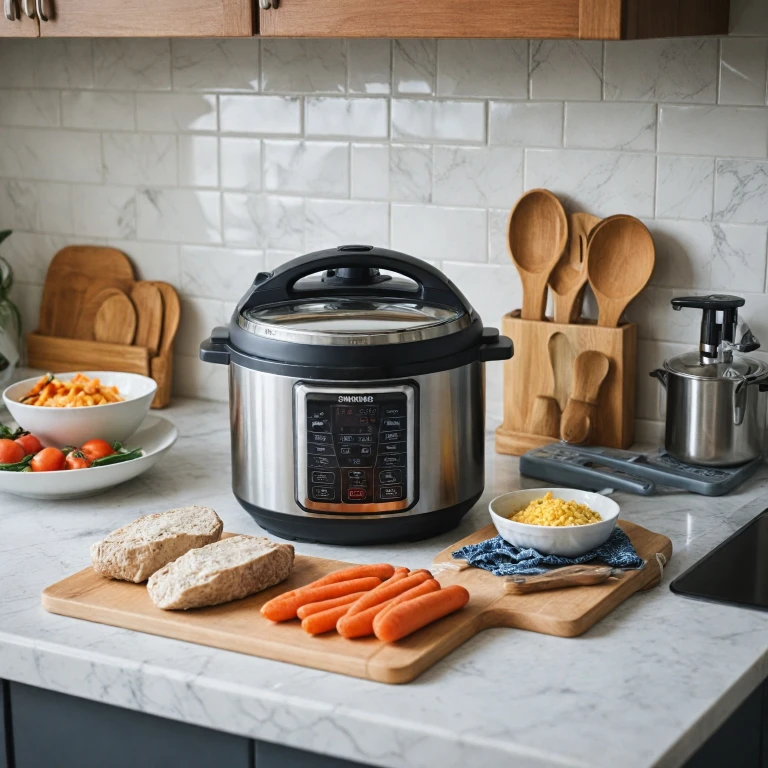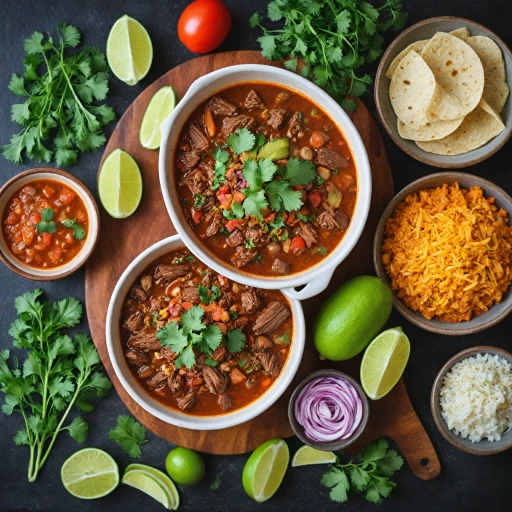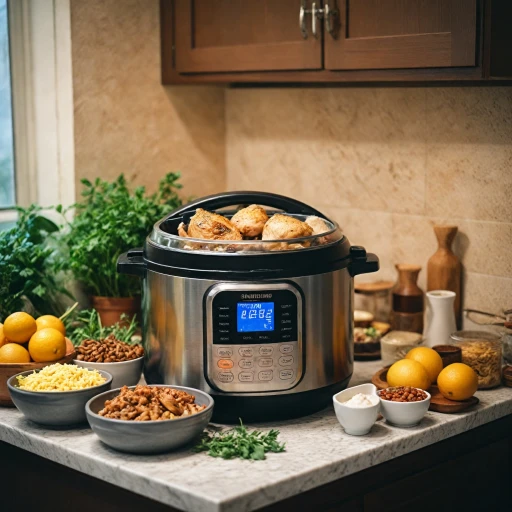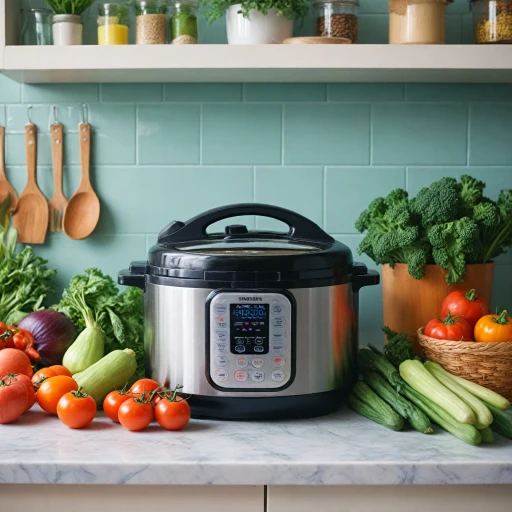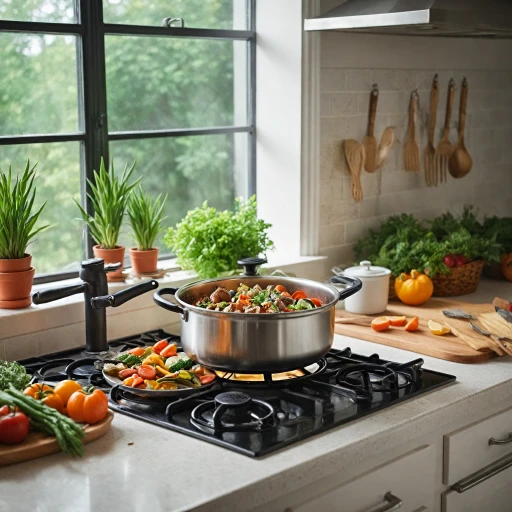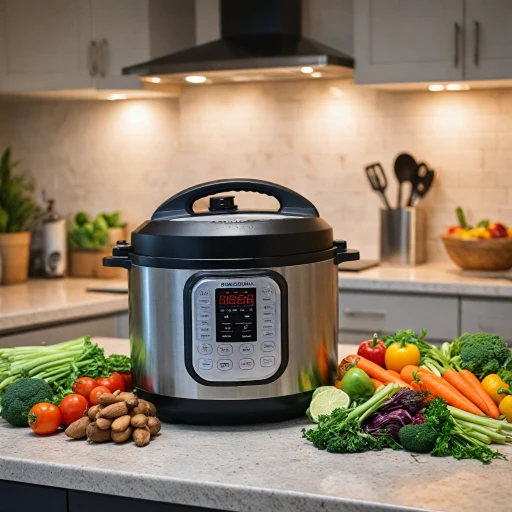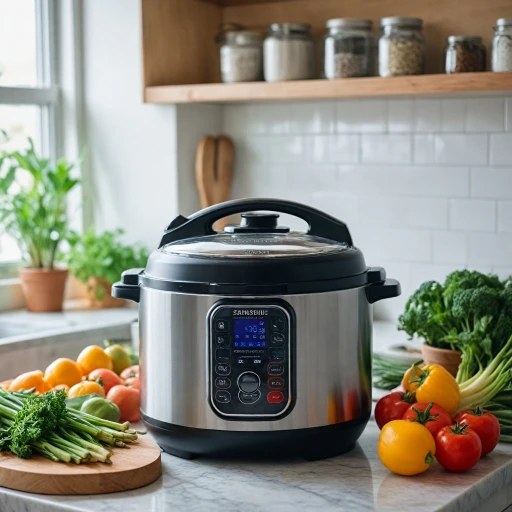Understanding the Basics of Electric Pressure Cookers
Grasping the Fundamentals
The modern kitchen has seen a revolution with the advent of electric pressure cookers, gaining favor for their efficiency and versatility. Designed to cook food rapidly by utilizing steam pressure, these appliances retain flavor and nutrients in a way that traditional cooking methods often miss. Understanding how they work is crucial to ensure safe operation and to make the most out of their culinary potential.
Electric pressure cookers are equipped with a sealed lid, which locks in steam generated from heated liquid inside. As the steam builds, it increases pressure, raising the cooking temperature significantly and reducing cooking time. This process is efficient but requires attention to safety protocols.
The appeal of these devices is further amplified by their multifunctionality; many models come with preset cooking modes, allowing you to steam, sauté, and even bake. However, before you dive into trying all these features, you should complete some pre-use safety checks and familiarize yourself with safe cooking practices to avoid mishaps in the kitchen.
Adhering to basic guidelines ensures both your safety and the longevity of your pressure cooker. It's about balancing the benefits of speedy cooking with mindful usage. Don't forget, knowing how to handle pressure safely and maintain your device is key to enjoying seamless culinary experiences. For those who appreciate innovation's nod to traditional methods, technology like this certainly stands the test of time.
Pre-Use Safety Checks
Initial Safety Measures Before Using Your Electric Pressure Cooker
Embarking on your culinary journey with an electric pressure cooker requires attention to initial safety measures. Ensuring your safety and making the most of your cooking experience begins with these pre-use safety checks:
- Read the Manual: Before you dive into creating delicious meals, it's crucial to thoroughly read the manufacturer's manual. Each model may have unique features and recommendations that are important to understand.
- Inspect the Seals: The rubber gasket or sealing ring is a key component for maintaining pressure. Check it for damages or wear, as a compromised seal can lead to issues during pressure cooking.
- Examine the Vent: Safety valves and steam vents must be clean and unobstructed. Blockages can prevent your cooker from building or releasing pressure safely, leading to potentially hazardous situations.
- Cord and Plug Check: Electric cords should be intact without frays or damages. A faulty cord can be a significant safety hazard. Ensure that the plug fits securely into your electrical outlet to avoid issues.
Following these pre-use checks ensures not only the longevity of your electric pressure cooker but also enhances safety. By adopting these measures, you're laying a strong foundation for successful cooking experiences.
Safe Cooking Practices
Cooking with Care: Best Practices for Using Your Electric Pressure Cooker
Cooking with an electric pressure cooker can be a seamless experience if done right. Ensuring safe cooking practices not only guarantees the longevity of your appliance but also ensures the safety of your culinary adventures. Here are some key tips to keep in mind:- Understand Your Recipe: Different recipes have different cooking requirements. Always make sure to follow pressure cooker-specific recipes, which are optimized for the appliance's unique environment.
- Do Not Overfill the Cooker: It's important to avoid overfilling the inner pot as this can lead to food blocking the steam-release valve or excess pressure buildup. Most models have a maximum fill line indicator, which is typically two-thirds full for most foods and half full for foods that expand, like rice or beans.
- Use the Correct Liquid Ratio: Electric pressure cookers operate by creating steam, so ensure there is enough liquid in the pot to generate pressure. Usually, at least one cup of liquid is needed.
- Secure the Lid Properly: Before starting the cooking process, double-check that the lid is fastened properly and the pressure valve is set to the correct position. Misalignment can cause issues during cooking.
- Care with Fatty and Foaming Foods: Foods like applesauce, cranberries, and pasta tend to froth, which can clog the pressure release valve. Take precautions or avoid cooking these in your pressure cooker.
Handling Pressure Safely
Releasing Pressure: Best Practices and Safety Measures
When using an electric pressure cooker, it's essential to understand and follow correct procedures for releasing pressure. This will ensure your safety and the efficiency of your cooking process. The two primary methods for releasing pressure are naturally, and through quick release. Each method has its own set of considerations:- Natural Release: This method involves allowing the pressure to decrease on its own once the cooking cycle is complete. It's the safest option when handling dishes that foam, froth, or expand during cooking, such as beans or pasta. Wait until the float valve drops, indicating pressure has been fully released.
- Quick Release: Engage this method by turning or pressing the pressure release valve to allow steam to escape rapidly. It's effective when you're cooking vegetables or when time is of the essence, but be sure to keep your hands and face away from the escaping steam to prevent burns.
Understanding Safety Mechanisms
Modern electric pressure cookers come equipped with numerous safety features designed to prevent accidents. Here are some of the mechanisms you should be aware of:- Pressure Indicators: These let you know when it's safe to open the lid. Always ensure the pressure has fully released before attempting to open the device.
- Sensors and Locking Lids: Automatically detect the lid's position, preventing it from being opened when the cooker is under pressure.
Avoiding Common Mistakes
In order to prevent issues like an improper seal or malfunction, always:- Ensure the seal and float valve are clean and free from obstruction.
- Regularly check and replace sealing rings to maintain a proper fit.
Maintenance and Cleaning Tips
Proper Maintenance to Ensure Longevity
Maintaining your electric pressure cooker properly is crucial to ensuring its longevity and efficient operation. After you've enjoyed a wonderful meal, there are several key steps to take to keep your appliance in top condition.
- Regular Cleaning: Always ensure that you clean your pressure cooker after each use. Pay special attention to parts like the silicon gasket and the lid, as food residue here can affect the sealing and pressure-retention abilities. A soft cloth or non-abrasive sponge is ideal for cleaning to avoid damage.
- Inspect the Sealing Ring: The sealing ring is an integral component of your electric pressure cooker. Check it regularly for signs of wear or damage and replace it if necessary to maintain proper pressure. A damaged sealing ring can lead to inefficient cooking and even safety risks.
- Clear the Vent Pipe: The vent pipe can get clogged with food particles over time, which is referenced in safe cooking practices. Ensure it's clean to allow for proper pressure release during cooking.
- Keep the Exterior Dry: While the interior can handle moisture, always keep the exterior and electric components dry to avoid damage or electrical hazards. A dry cloth can help you maintain a spotless exterior.
For more detailed maintenance guidelines, always refer to the manufacturer's instructions for your specific model, as handling recommendations can vary. Keeping up with these maintenance tips will not only help your cooker perform better but also extend its life.
Troubleshooting Common Issues
Resolving Common Electric Pressure Cooker Problems
Even with careful use, electric pressure cookers can sometimes encounter issues. Here are some common problems and how to troubleshoot them:
- Pressure Not Building: If your cooker isn't reaching pressure, check the sealing ring for proper placement and ensure it's not damaged. A misaligned or worn-out ring can prevent pressure buildup.
- Steam Leaking: Steam escaping from the sides could indicate a lid that's not sealed correctly. Make sure the lid is locked in place and the sealing ring is intact.
- Burn Notice: This usually means food is stuck to the bottom. To prevent this, always ensure there's enough liquid in the pot and stir ingredients to avoid sticking.
- Display Errors: If your cooker shows an error code, refer to the manual for specific instructions. Often, resetting the unit or ensuring proper assembly can resolve these issues.
- Difficulty Opening Lid: If the lid is stuck, ensure all pressure is released before attempting to open. Refer back to handling pressure safely to avoid any risks.
Regular maintenance and following pre-use safety checks can minimize these issues. If problems persist, consulting the manufacturer's support might be necessary to ensure safe and effective use of your electric pressure cooker.
